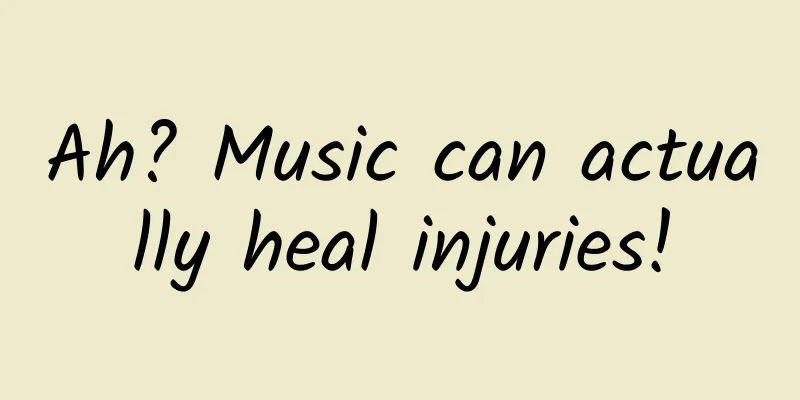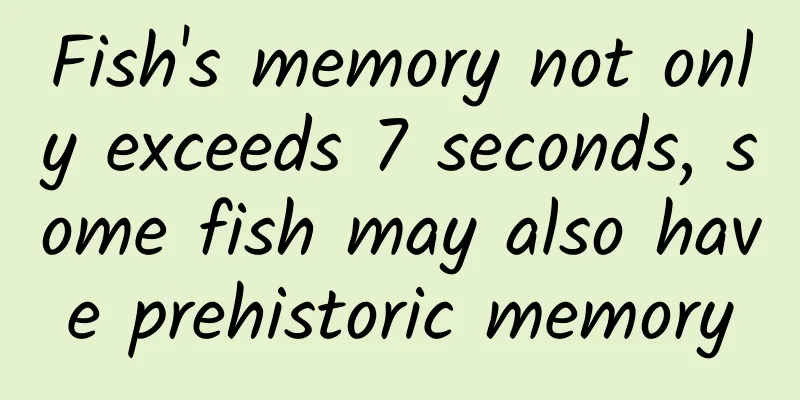Ah? Music can actually heal injuries!

|
In order to ensure the popularization effect of learning health knowledge in the "2024 China Elderly Health Knowledge Competition", the organizers have collected various health science articles suitable for the elderly to learn from various hospitals, and we will share them through the "Health Lecture" column. Today, Jia Yanmei, a teacher from the Spine and Spinal Cord Neurological Function Reconstruction Department of Beijing Boai Hospital, China Rehabilitation Research Center, brought us: "Rehabilitation in Melody: Music Therapy Lights Up Hope for Patients with Spinal Cord Injury", welcome elderly friends to learn. Patients with spinal cord injury face a variety of rehabilitation challenges, including limb dysfunction, psychological pressure, and decreased quality of life. Traditional rehabilitation methods often focus on physical therapy and drug therapy, while ignoring the spiritual and psychological needs of patients. With the development of medicine and rehabilitation, music therapy, as an innovative rehabilitation method, has gradually been applied in the rehabilitation treatment of patients with spinal cord injury. As a non-drug treatment method, music therapy is gradually igniting the hope of patients with spinal cord injury in rehabilitation treatment. This article aims to introduce the key points of the application of music therapy in patients with spinal cord injury, in order to provide a reference for relevant personnel. 1. What is music therapy? Music therapy is a systematic intervention process that uses music and its elements to promote the physical and mental health of individual patients. This treatment method is different from ordinary music appreciation or performance. Instead, it uses various characteristics of music, such as rhythm, melody, harmony, etc., designed and guided by professional therapists to achieve the purpose of treatment. 2. Which patients with spinal cord injury need music therapy? Music therapy is a non-drug treatment for patients with spinal cord injury. It is mainly aimed at those who have difficulty managing emotions, experience anxiety and depression, have reduced social interactions, are limited in daily activities, feel frustrated with the rehabilitation process, and need psychological support. Through music therapy, patients can improve their mood, reduce anxiety and depression symptoms, and promote mental health. Music therapy methods include passive, active, and a combination of active and passive methods, such as listening to music, singing, playing, etc. These methods should be determined according to the specific situation and needs of the patient, and are best carried out under the guidance of a professional music therapist. 3. Effects of music therapy on patients with spinal cord injury The application of music therapy in patients with spinal cord injury can mainly improve the patient's mood and psychological state, especially for anxiety and depression symptoms. According to relevant studies, music therapy also has a positive effect on post-traumatic stress disorder (PTSD) in patients with spinal cord injury. In one study, participatory music therapy was applied to patients with spinal cord injury, and it was found that this treatment method could significantly improve patients' PTSD symptoms, including reducing their anxiety and depression levels. Treatment methods include listening to music, playing musical instruments, and rhythmic movements, which help patients relax, improve their psychological state, and promote functional recovery. Another study also supports this finding, showing that music therapy can significantly improve anxiety and depression in patients with spinal cord injury and improve treatment compliance. In the study, the Hamilton Anxiety Rating Scale (HAMA) and Hamilton Depression Rating Scale (HAMD) scores of patients receiving music therapy were significantly lower than those of patients who only received conventional care. In addition, studies have pointed out that music therapy can relieve anxiety and depression in patients with spinal cord injury and enhance their treatment initiative. In the study, the HAMA and HAMD scores of patients receiving music therapy after treatment were significantly lower than those of the control group. In summary, the application of music therapy in patients with spinal cord injury shows positive effects, especially in improving patients' anxiety, depression and other emotions. 4. How music therapy helps patients with spinal cord injury Music therapy helps patients with spinal cord injury achieve rehabilitation and improve their quality of life at multiple levels, including emotional, social, cognitive, physical, and psychological, through a variety of mechanisms. Music therapy brings comprehensive physical and mental rehabilitation to patients with spinal cord injury through musical characteristics such as rhythm, melody, and harmony. It can not only regulate emotions, reduce anxiety and depression, but also promote social interaction, improve cognitive function, and assist in physical rehabilitation. Music therapy activities are often carried out in groups, providing patients with a platform to interact with others, co-create music or participate in chorus, bands, etc., which can enhance communication skills and improve social skills. In addition, music therapy can stimulate the brain and improve cognitive function. For example, activities such as memorizing songs and improvisation can enhance memory, attention, and creativity. At the same time, music therapy can also help patients with physical exercise, balance training, and coordination training to promote physical rehabilitation. Music therapy also provides opportunities for self-expression and self-esteem improvement, helping patients build confidence and improve their sense of self-worth. It has analgesic effects and can help patients relieve chronic pain by diverting attention and reducing anxiety. At the same time, listening to soothing music can lower heart rate and blood pressure, improve breathing rhythm, and contribute to the patient's physiological health. For people with spinal cord injury who are experiencing changes and challenges in their lives, music therapy can also provide emotional support and psychological comfort to help them adjust to their new living conditions. 5. Implementation of music therapy in patients with spinal cord injury The implementation of music therapy in patients with spinal cord injury is a comprehensive process that aims to use the power of music to promote the patient's physical and mental recovery. First, the music therapist will conduct a comprehensive assessment of the patient, including their physical, psychological, social and cognitive status, as well as music preferences and previous music experience. Based on the assessment results, the therapist will work with the patient to set specific, measurable treatment goals, such as improving mood, enhancing social interaction, and improving quality of life. Next, the therapist will design personalized music therapy activities, which can be passive listening, active participation or improvisation, including music games, singing, rhythm exercises, instrumental performance, etc. During the treatment process, the therapist will guide the patient to participate in various music activities and adjust the activities according to the patient's response and progress to ensure the effectiveness of the treatment and the patient's participation. In addition, the therapist will continuously monitor the patient's progress and regularly evaluate the achievement of treatment goals. Based on the patient's progress and treatment response, the therapist may adjust the treatment plan. Once the treatment goals are achieved, the therapist will decide with the patient when to end the treatment and provide subsequent advice or follow-up plans to maintain the patient's progress. The therapist will also encourage the patient's family members to participate in the treatment process so that they can continue to support the patient's music activities in the home environment. In addition, therapists may also work with social service agencies to help patients find opportunities to participate in music activities in the community. In summary, the implementation of music therapy in patients with spinal cord injury is a carefully planned and personalized process that helps patients achieve recovery and improve their quality of life at multiple levels, including emotional, social, cognitive, physical, and psychological, through the power of music. In short, music therapy, as an innovative rehabilitation method, has brought new hope to patients with spinal cord injury. Through the power of music, patients can find new motivation on the road to recovery and light up the hope of life. Music therapy can not only improve patients' emotions, social, cognitive, physical, psychological and other aspects, but also help patients build self-confidence and improve their sense of self-worth. Through music therapy, patients with spinal cord injury can find new motivation on the road to recovery, light up the hope of life, and welcome a better future. About the Author Jia Yanmei is the head nurse and deputy chief nurse of the Spine and Spinal Cord Neurological Function Reconstruction Department of Beijing Boai Hospital, deputy director of the Rehabilitation Nursing Professional Committee of Beijing Rehabilitation Medicine Association, member of the Orthopedic Professional Committee of Beijing Nursing Association, and member of the Nursing and Care Branch of the Chinese Society of Gerontology and Geriatrics. She is responsible for teaching rehabilitation nursing specialist nurses of the Chinese Nursing Association, presiding over a project of the Ministry of Finance, participating in the key project of the National Key R&D Program "Science and Technology Winter Olympics", participating in the Beijing Municipal Science and Technology Commission's Capital Clinical Characteristic Project and other projects, applying for 2 utility model patents, and publishing several articles in core journals. She has been engaged in rehabilitation nursing for more than 30 years and has rich clinical nursing experience. |
<<: Why is Zhengzhou said to be the “hometown” of Tang blue and white porcelain?
>>: Why is physics so powerful in creating new mathematics?
Recommend
User growth: build your own traffic pool!
Build your own traffic pool, expand it through pr...
"Flying to the sky to realize the dream" Massive information interaction without worries, let you know about the efficient and intelligent "ship secretary"
The Mengtian laboratory module of the space stati...
Accenture report: Vision of digital health technology
Accenture has released a new report, "Digita...
3 data analysis methods that product operators must know!
“What kind of product operation is it?” “Is produ...
How to choose promotion channels for efficient delivery?
Traffic is the essence of all business, whether o...
Goose: Don’t compare me with roast duck. Even a dog can’t underestimate my fighting ability!
I am Dong Dong Meow Talking animals are so fun! T...
Alibaba's three major marketing models: AIPL, FAST, and GROW
This article will use relatively colloquial langu...
The ancient ship "Yangtze River Estuary No. 2" entered the dock! Why do experts speculate that it is a sand ship?
The ancient ship "Yangtze River Estuary No. ...
With the frequent launch of multiple satellites with one rocket, what technical challenges need to be overcome?
Recently, rocket launches by various countries ha...
After the boom of live streaming and influencer economy, Weibo wants to be the connector between marketers and influencers!
The booming live streaming market and internet ce...
Chen Naiba's Douyin Book List Performance Course, the core skills and operating standards for quickly starting an account [Video Course]
Chen Naiba's Douyin Book List Performance Cou...
Judgment on marketing trends in 2021!
The past year has been extremely magical, and I b...
What qualifications are required for the Maoming knowledge payment mini program? What are the features?
WeChat, as the largest traffic portal on mobile t...
Importance of App Title in ASO Optimization
The title is the most important metadata for user...
After the long Spring Festival holiday, how can we quickly get back to work?
The short Spring Festival holiday is coming to an...









